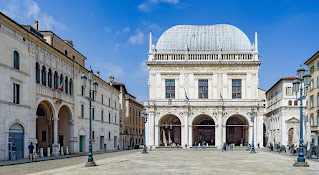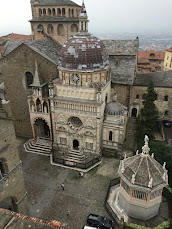Michele Alboreto - racing driver
Last Italian to go close to Formula One title
No Italian motor racing driver has won the Formula One world championship since 1953 but Michele Alboreto, who was born on this day in 1956, went as close as anyone. Racing for Ferrari, Alboreto finished runner-up in 1985, beaten by just 20 points by Alain Prost. Riccardo Patrese finished second in 1992 but the gap between him and champion Nigel Mansell was a massive 52 points after the British driver won nine Grand Prix victories to Patrese's one. Patrese was never even in the hunt in 1992 after Mansell began the season with five straight wins.By contrast, Alboreto's 1985 duel with Prost could have gone either way until well into the second half of the campaign. Alboreto scored two race wins and four second places to lead by five points after winning race nine of the 16-race series in Germany. However, a series of disastrous engine failures late in the season wrecked Alboreto's chance to be the first Italian champion since Alberto Ascari in 1953. Prost won the next race in Austria to draw level and after both finished on the podium in the Netherlands the Frenchman led by just three points with five races left. Read more…
__________________________________________________________
Giuseppe Tomasi di Lampedusa – writer
Sicilian prince whose novel achieved recognition after his death
The Sicilian writer, Giuseppe Tomasi di Lampedusa, was born on this day in 1896 in Palermo in Sicily. He became the last Prince of Lampedusa after the death of his father and his only novel, Il Gattopardo (The Leopard), was published in 1958 after his death, soon becoming recognised as a great work of Italian literature. The novel, which is set in his native Sicily during the Risorgimento, won the Strega Prize in 1959 for him posthumously. After starting to study jurisprudence at university in Rome he was drafted into the army in 1915. He fought in the battle of Caporetto and was taken prisoner by The Austro-Hungarian army. He was held in a prisoner of war camp for a while in Hungary but managed to escape and return to Italy. Giuseppe inherited his father’s title in 1934 and eventually settled down to write his novel. He completed Il Gattopardo in 1956, but it was rejected by the first two publishers he submitted it to. Giuseppe Tomasi di Lampedusa died in Rome in 1957 at the age of 60. His novel was published a year after his death. It became the best selling novel in Italian history. Read more…
_________________________________________________________
Dino Risi – film director
Film comedy director helped launch career of Sophia Loren
The director Dino Risi, who was regarded as one of the masters of Italian film comedy, was born on this day in 1916 in Milan. He had a string of hits in the 1950s and 1960s and gave future stars Sophia Loren, Alberto Sordi and Vittorio Gassman opportunities early in their careers. Risi’s older brother, Fernando, was a cinematographer and his younger brother, Nelo, was a director and writer. He started his career as an assistant to Mario Soldati and Alberto Lattuada and then began directing his own films. One of Risi’s early successes was the 1951 comedy, Vacation with a Gangster, in which he cast the 12-year-old actor Mario Girotti, who later became well known under the name Terence Hill. His 1966 film, Treasure of San Gennaro was entered into the 5th Moscow International Film Festival where it won a silver prize. Among his best-known films are Pane, amore e… in 1955, Poveri ma belli in 1956, Una vita difficile in 1961 and Profumo di donna in 1974. He was awarded the David di Donatello award for best film director in 1975 for Profumo di donna. The actor Al Pacino would win an Oscar for a remake of the movie as Scent of a Woman in 1992. Read more…
_________________________________________________________
Carla Bruni - former First Lady of France
Ex-model and singer who married Nicolas Sarkozy
Carla Bruni, the model and singer who became the wife of French president Nicolas Sarkozy, was born on this day in 1967 in Turin. She and Sarkozy were married in February 2008, just three months after they met at a dinner party. Sarkozy, who was in office from May 2007 until May 2012, had recently divorced his second wife. Previously, Bruni had spent 10 years as a model, treading the catwalk for some of the biggest designers and fashion houses in Europe and establishing herself as one of the top 20 earners in the modelling world. After retiring from the modelling world, she enjoyed considerable success as a songwriter and then as a singer. Music remains a passion; to date, her record sales stand at more than five million. Born Carla Gilberta Bruni Tedeschi, she is legally the daughter of Italian concert pianist Marisa Borini and industrialist and classical composer Alberto Bruni Tedeschi. However, she revealed in a magazine interview soon after she and Sarkozy were married at the presidential residence the Élysée Palace in Paris, that her biological father is the Italian-born Brazilian businessman Maurizio Remmert, who was a classical guitarist. Read more…
__________________________________________________________
Giovanni Battista Crespi - Baroque artist
Religious painter portrayed saints expressing human emotions
Painter, sculptor and architect Giovanni Battista Crespi was born on this day in 1573 in Romagnano Sesia in the Piedmont region of Italy. His father was the painter Raffaele Crespi, who eventually moved his family to live in Cerano near Novara. When Giovanni Battista Crespi became one of the chief Lombardy artists of the early 17th century, he was often referred to as Il Cerano. Reflecting the Counter Reformation pious mood of the time, many of his paintings focused on mysteries and mystical episodes in the lives of the saints, capturing their emotions. Crespi spent some time in Rome, where he formed a friendship with the Milanese cardinal, Federico Borromeo, who became his patron. Together, they went to Milan, which was under the inspiration of the cardinal’s uncle, Charles Borromeo, and was a centre for the fervent spiritual revival in art. Crespi formed a style that was Mannerist in its use of colour and in the mystical quality of his figures, although he also gave them realistic details. Along with other artists, Crespi completed a series of paintings, Quadroni of St Charles, for the Duomo in Milan. Read more…


















